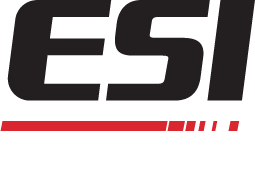Electron Beam Cross Linking For Various Packaging Applications
Abstract
Radiation cross-linking comprised of gamma rays from a Co60 source and even high-energy electron cross-linking from > 1 MeV accelerators have been commercial since 1960s. These applications were mostly for the wire and cable industry, rubber tires and some high-barrier shrink film applications for meat packaging introduced by Cryovac. Since the development of low-voltage electron beam accelerators in the range of less than 300 kV – in particular in the 125 kV range – EB cross-linking has found new applications and markets, particularly in the packaging industry. This report will discuss these markets, along with the properties achieved by electron beam irradiation of polyolefin films used in packaging. In addition, theory of electron beam cross-linking will be discussed in detail.
Read More
Toyo Ink Introduces New EB Flexo Inks
At the end of January 2017, Toyo Ink Co. announced a new line of electron beam curable flexo inks. The line, named the Elex-one series, is an ideal ink set for food packaging applications. The announcement comes as little surprise; there is an increasing demand for food-safe inks as the food packaging market rapidly expands. Electron beam curing uses food safe inks that have no volatile organic compounds (VOCs) and is a more sustainable alternative to other traditional printing and curing processes.
Read More
Visit Esi At Uv.eb West
This week, ESI will be at the uv.eb West conference in San Francisco, CA. The three-day materials and manufacturing summit will include a variety of conference sessions on the science behind ebeam and a special session on the future of food packaging. If you are planning on attending, or will be in the San Francisco area during the conference, and would like to learn more about the products and services we offer, please stop by our booth and say hello!
Read More
Electron Beam Accelerators
Electron beam accelerators can be made in a number of ways: cathode ray tubes (CRT) that sweep or scan the process area, electron wide-area curtains and sealed vacuum tube systems.
Read More
How EB Can Help Pg Achieve Their Zero Waste Goal
Following suit of a long line of manufacturers, Proctor and Gamble (P&G) announced this month that they will be increasing their sustainability efforts in order to achieve zero waste goods. The plan, which requires additional investment to meet their 2020 goals, includes eliminating all manufacturing waste and lowering their energy consumption. One effective way to reduce manufacturing waste is to use 100% solid EB inks in the printing and curing stage of package manufacturing. As P&G moves toward their goal we expect them to make adjustments at every step of their production process.
Read More
Siegwerks New EB Offset Inks
Siegwerk, an international printing ink leader, recently announced their latest generation of electron beam (EB) offset inks. The inks are an innovative solution for the offset printing and EB curing process. This new technology allows for exceptional print quality and reduces operational costs.
Read More

